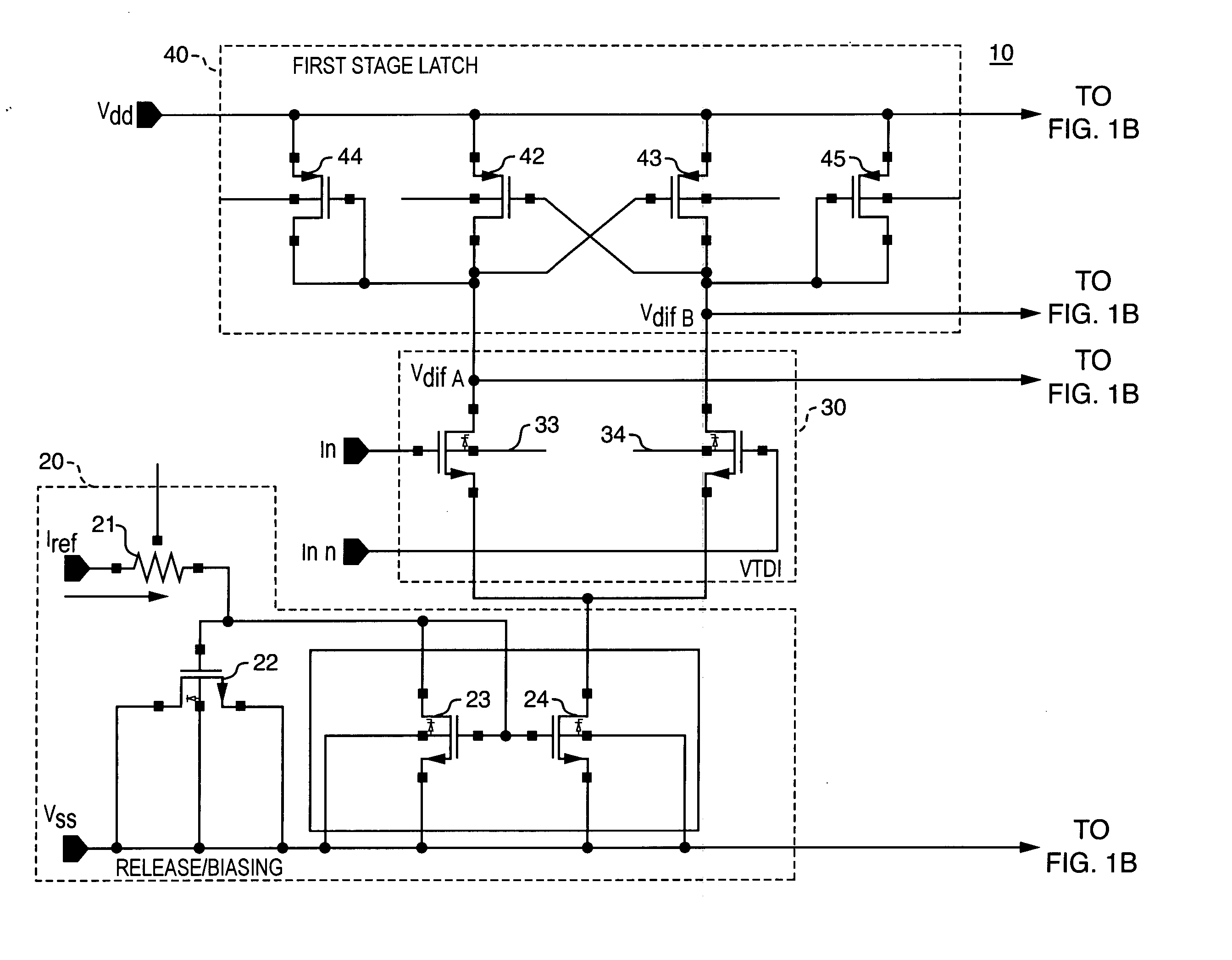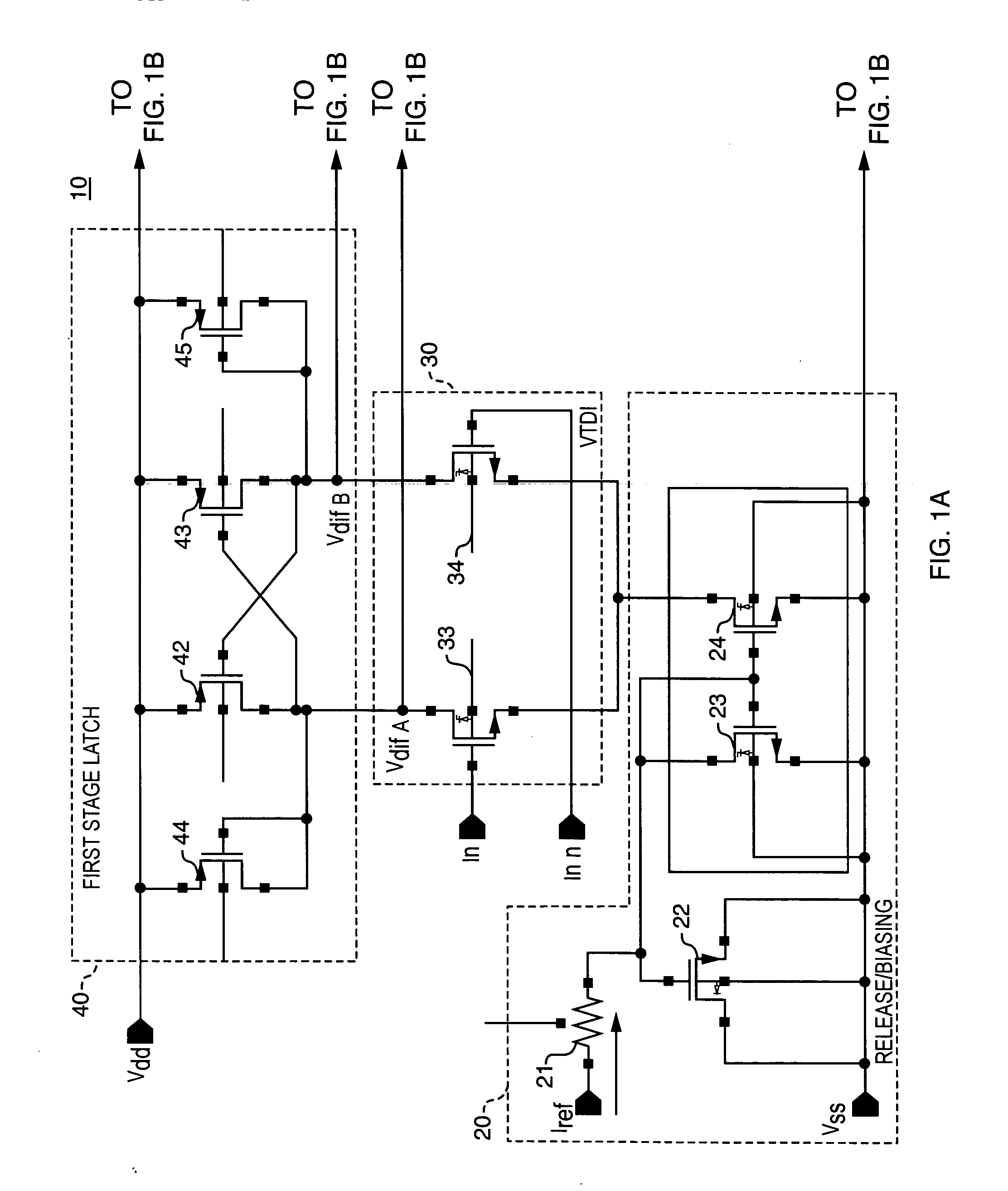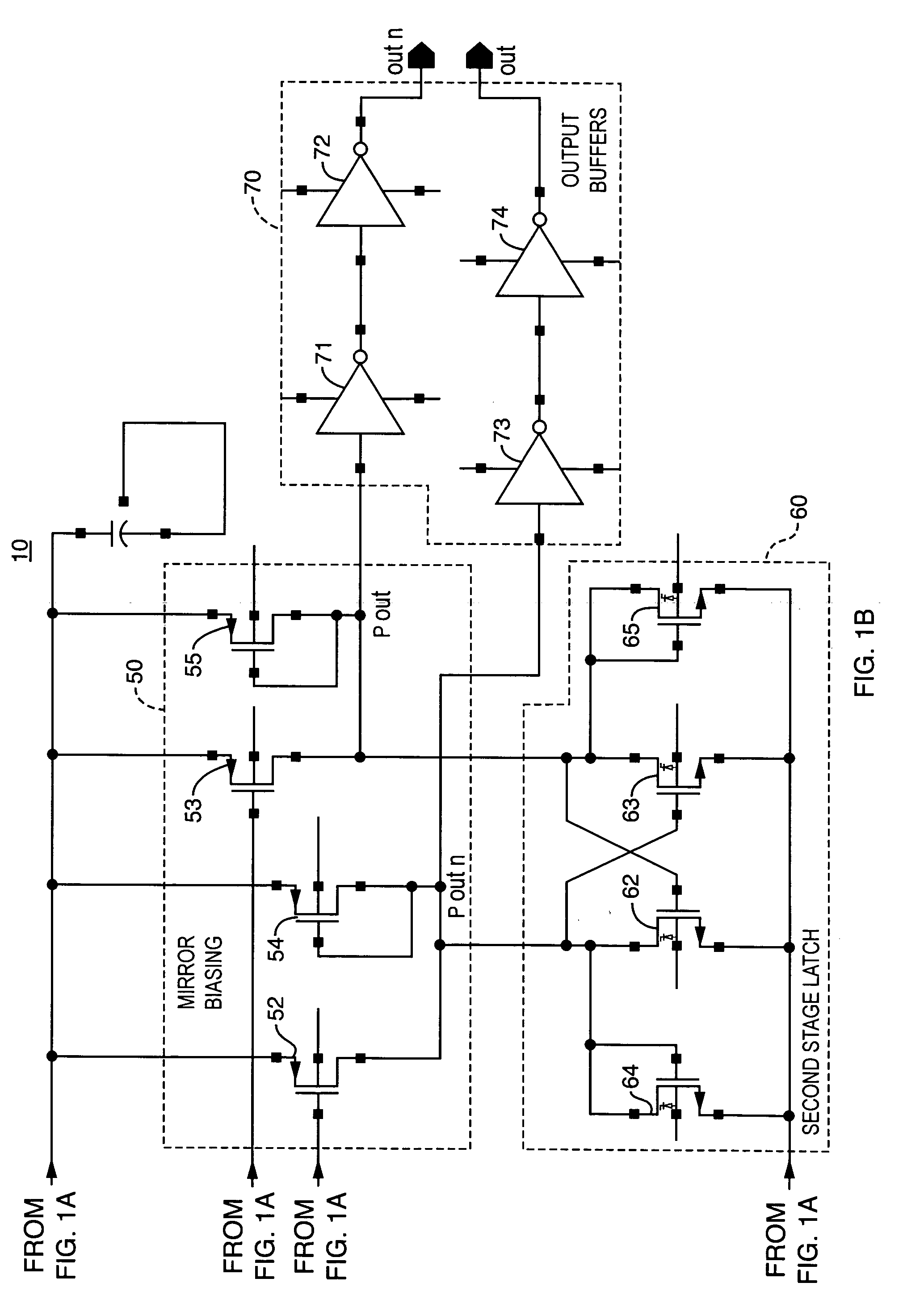Differential clock input buffer
a differential clock and input buffer technology, applied in the field of digital clock input buffers, can solve the problems of adding noise to the resulting output, and the single latch stage provided by the second stage will still exhibit some level of jitter, so as to improve the hysteresis of input, improve the noise immunity, and improve the effect of duty cycle control
- Summary
- Abstract
- Description
- Claims
- Application Information
AI Technical Summary
Benefits of technology
Problems solved by technology
Method used
Image
Examples
Embodiment Construction
[0022] A description of preferred embodiments of the invention follows.
[0023]FIG. 1 is a schematic diagram of one preferred embodiment of a clock buffer circuit 10 according to the present invention. The circuit 10 consists of several functions, including a reference / biasing circuit 20, a voltage to current (V-to-I) converter (differential pair) 30, a first stage latch 40, a mirror / biasing circuit 50, a second stage latch 60, and output buffers 70.
[0024] The input signal(s) may be single or double ended. If a single ended signal, it is provided at terminal IN (or just at INN, with the other input terminal biased somewhere near vdd / 2); if double ended, they are provided to inputs IN and INN. The voltage to current converter 30 converts these input voltage(s) to differential currents at nodes VdiffA and VdiffB. The voltage to current converter 30 consists of a pair of CMOS transistors 33, 34 arranged as a differential amplifier, to provide current from a source Vss (and to reject co...
PUM
 Login to View More
Login to View More Abstract
Description
Claims
Application Information
 Login to View More
Login to View More - R&D
- Intellectual Property
- Life Sciences
- Materials
- Tech Scout
- Unparalleled Data Quality
- Higher Quality Content
- 60% Fewer Hallucinations
Browse by: Latest US Patents, China's latest patents, Technical Efficacy Thesaurus, Application Domain, Technology Topic, Popular Technical Reports.
© 2025 PatSnap. All rights reserved.Legal|Privacy policy|Modern Slavery Act Transparency Statement|Sitemap|About US| Contact US: help@patsnap.com



